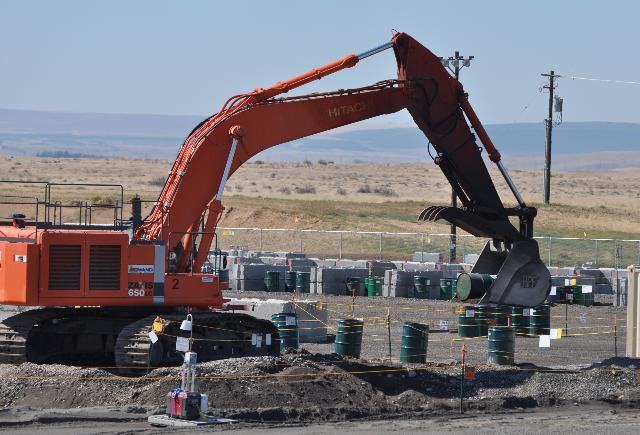
PHOENIX, Ariz. – While the Department of Energy and its nuclear cleanup contractors acknowledge they are learning on the job, both sides Wednesday stressed the urgency of meeting deadlines for the first set of solicitations issued under the agency’s overhauled approach to procurement.
Requests for proposals are due March 18 for two potential 10-year, multibillion-dollar contracts at the Hanford Site in Washington state. The Central Plateau Cleanup Contract and the Tank Closure Contract are the first two RFPs to employ DOE’s new end-state contracting model.
Delays on those awards could “choke the entire system” of upcoming contracts in the pipeline, said Greg Meyer, senior vice president for Fluor’s environment and nuclear business. The next contracts earmarked for the end-state approach — Nevada Environmental Protection, the West Valley Demonstration Project in New York, Idaho National Laboratory, Portsmouth Decontamination and Decommissioning, and the Oak Ridge Remediation Contract – are all set to come in rapid succession over the next couple years, he noted.
The Office of Environmental Management plans to issue the Nevada RFP in either April or May.
The agency is pushing hard to issue the two Hanford awards in July because the current contract extensions are scheduled to expire in September, said Tamara Miles, procurement director for DOE’s Environmental Management Consolidated Business Center.
“It’s very challenging to do two proposals at once, especially under a new system,” said Karen Wiemelt, Jacobs senior vice president and general manager for North American nuclear. There is a lot to be figured out going forward on how the new approach will really differ from the old system, she added.
The Energy Department wants to get regulators involved in the process somehow, because they affect work milestones, but has not determined how to do so, said Angela Watmore, a senior adviser at Environmental Management.
Generally speaking, an “end state” can involve completion of a specific task or full remediation of a site, Miles said, admitting she had not reviewed the formal agency definition prior to her conference presentation.
In selecting a contractor, the end-state process will place more importance on key personnel than the status quo. The project manager is the only mandatory key person on a contract, although others can be included, Miles said. The agency will go back four years to evaluate contractors’ past practice, which is shorter than the current practice in procurement.
AECOM Executive Vice President Mark Whitney agreed said is “a little more scrambling” associated with the tank contract, because Central Plateau documents have been out a few months longer.
This revised approach to contracting is “a bold, audacious move,” said Whitney, who spent two decades at DOE, including as principal deputy assistant secretary for environmental management.
The new model emphasizes use of indefinite-delivery/indefinite-quantity (IDIQ) agreements over the traditional prime contractor approach in which DOE and the vendor agree to a 10-year pricing agreement in advance. Instead, the Energy Department will “partner” with a contractor team to handle a wide array of task orders assigned under the contract, according to the agency.
The end state “is not a contract type but a contracting approach,” Miles said. The Energy Department has encouraged its branches to make greater use of IDIQ contracts, which enable more of an al a carte approach to task orders, rather than a 10-year bundle.
The Office of Environmental Management hopes the end-state approach will prove a nimbler system of procurement for DOE, and also reduce the time and expense run up by contractors when putting a bid proposal together.
The Energy Department also hopes the changes might entice more vendors to bid on environmental remediation business. While the two Hanford bid proposals are not due until March 18, the cleanup office has seen evidence of more tire-kicking by companies outside the market regulars.
The end-state contract template includes an “off ramp” provision, basically giving DOE an escape clause without liability if it decides it has picked the wrong partner, she added. The government can already terminate a contract at any time, although the revised approach will evidently make it clearer there is no black mark on the vendor’s record.
New Approach Expected to Encounter Growing Pains
The Energy Department and Assistant Secretary for Environmental Management Anne Marie White have said the status quo is unacceptable given the cleanup office’s $377 billion in environmental liability.
At the same time, observers said this is a new program and plenty of things can go wrong.
The status quo seems to be all right with many managers at DOE who don’t appear to have a “partnering attitude,” Wiemelt said.
Other panelists said Environmental Management headquarters and some of its field managers have in the past often not been on the same page on a variety of issues – which makes it complicated for contractors who must please both.
On the industry side it can often take two or three years to really get up to speed on a site and make things run smoothly, said Meyer, who seemed concerned DOE could read too much into the outcome of early task orders in a new contract.